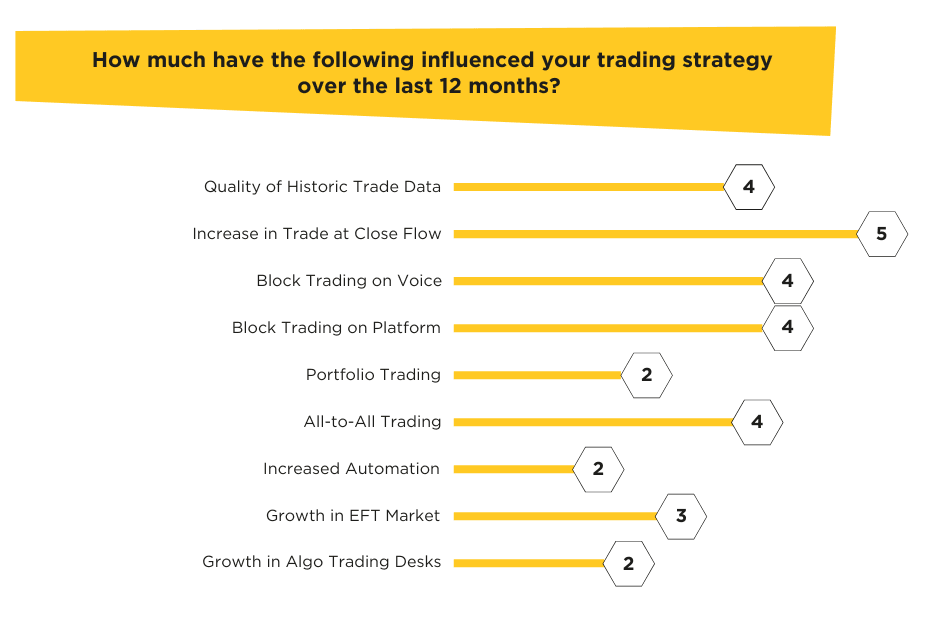The Finance Hive: Global Pulse
In the rapidly evolving world of Fixed Income credit trading, data is no longer a competitive advantage—it’s an operational necessity. From understanding liquidity conditions to refining execution strategies, trading desks are doubling down on data to stay ahead, but while the potential is clear, challenges remain in unlocking its full power.
Why Historical Data Is a Game-Changer
Among the key applications for historical data in Fixed Income trading, three areas stand out:
- Liquidity provider selection: 80% of buy side respondents rely on historical data to identify counterparties that can offer the most relevant liquidity pools, enabling more effective RFQ and algorithmic trading.
- Market context: Historical data is increasingly used to navigate shifting liquidity conditions, helping trading desks remain agile in volatile markets.
- Execution precision: Despite its importance, only 54% of desks use historical data to refine execution strategies, highlighting a gap in how data is being applied across workflows.
Combining our internal data with third-party, aggregated market data is becoming increasingly more powerful and useful as data becomes more accessible and reliable. External solutions help with TCA, order routing, and identifying patterns in market behaviour.”
Paul Cable, Head of International Fixed Income Trading, T. Rowe Price
Bridging the Gap between Insight and Action
While most desks see data as critical, many feel they are yet to fully capitalise on its potential. For instance, 38% of respondents rate the use of data for execution strategies as suboptimal. However, with 75% of firms willing to invest in tools and technology to improve data utilisation, the industry is on the cusp of significant transformation.
Our primary data sources for evaluating new trades include runs, quotes, streams, and axes, with a heavy reliance on axes for pre-trade information. We also utilise post-trade Transaction Cost Analysis (TCA) data, which informs our pre-trade decision-making process.”
Shaun Copeman, Senior Trader, Federated Hermes
The integration of post-trade insights into pre-trade strategies is a key focus, with 60% of desks reporting positive results.
The Rise of Dealer Selection Protocols
Dealer selection tools are becoming a cornerstone of data-driven trading, enabling desks to access liquidity beyond traditional venues. By using protocols that leverage both historical and real-time data, traders can achieve more consistent execution results.
Our SNAP IOI dealer selection tool has further enhanced our ability to access and leverage diverse liquidity sources, significantly improving execution outcomes. In April 2024, we reported that SNAP IOI drove over €2bn in enquiry volume with a 34% hit rate.”
Mike Roffey, Head of European Credit, Tradeweb
What Lies Ahead?
Looking forward, Fixed Income desks are prioritising:
- Greater automation in data utilisation: 97% of respondents expect their automated trading capabilities to increase in the next 12-18 months, driven by advancements in AI and machine learning.
- Enhanced integration of historical and real-time data: With data applications still fragmented across many firms, the race is on to achieve a more unified, actionable approach.
- Investment in tools and platforms: As technology providers continue to innovate, trading desks are actively seeking partnerships that align with their evolving needs.

We plan to automate areas, such as identifying intra-curve or cross-currency opportunities, informing traders with alternative views, and continually assessing ways to engage interoperability and AI in our workflows.”
Paul Cable, Head of International Fixed Income Trading, T. Rowe Price
Turning Data into an Advantage
As liquidity pools diversify and execution complexities grow, the desks that succeed will be those that can transform data into actionable insights. Whether through advanced dealer selection protocols, post-trade analysis integration, or investment into real-time analytics, data proficiency is shaping the future of Fixed Income trading.
Access more credit trading insights, including exclusive, on-the record interviews with our Fixed Income members by downloading our most recent pulse report—in collaboration with Tradeweb!

